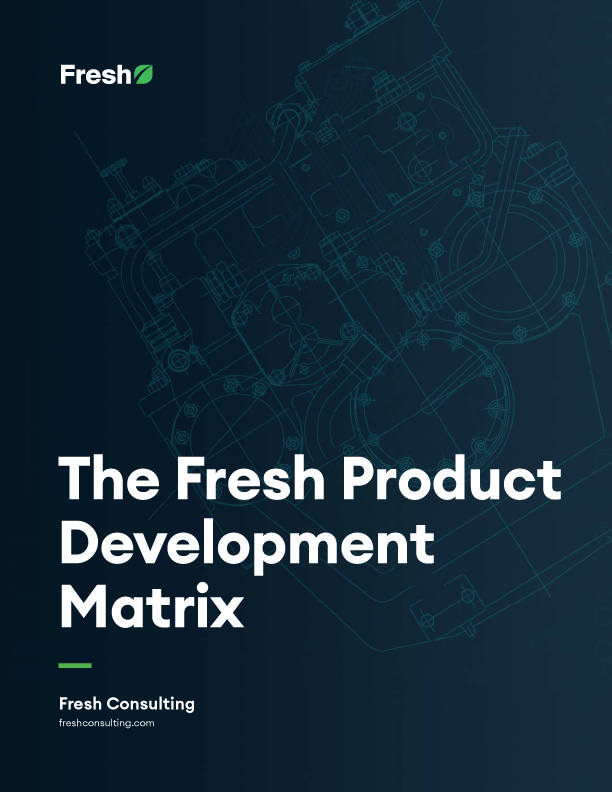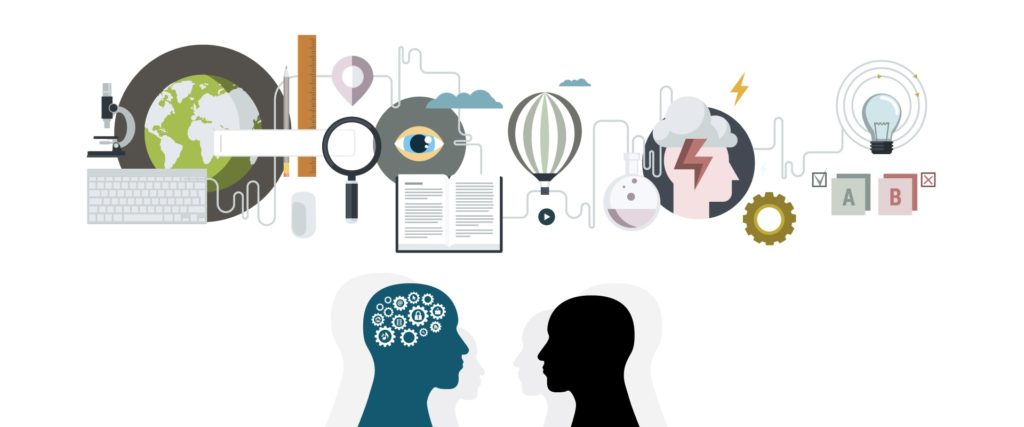Article
Design Thinking Defined in 4 Steps

What is design thinking?
Design thinking is a methodology and process that is unmatched in its ability to explore visual solutions to complex problems. Imagine design thinking as a means to explore complicated challenges without a guide or desired outcome, but with the confidence that you will produce a unique solution.
Design thinking is a multi-stage process that applies a designer’s mindset to organizational and global complexities, in traditionally designed areas, and non-traditional functional areas (e.g., not only product design, but also business strategy, finance, medicine, agriculture, city planning, etc.).
We can identify four key components of design thinking:
- Establish Empathy for Your Users
- Engage in Holistic Analysis of the Problem
- Create Iterative Visualization of Ideas
- Conduct Cycles of Testing and Exploration
The Rise of Design Thinking:
The rise in popularity of this new mode of thinking, feeling, and operating stems from the need for incremental and breakthrough innovation. The complexities of the modern world continue to push today’s businesses to find creative solutions to their most significant challenges. Design thinking shifts problem-solving to be undertaken with a holistic design eye, an analytical mind, and most importantly, an empathetic human touch.
The Design Value Index Study from 2015 showed that Nike, Starbucks, Target, and 13 other design-driven businesses had 10-year returns that outperformed their peers on the S&P 500 by 211 percent.
Design thinking is present across an array of industries, and organizations continue to adopt it looking to equip their teams with a mindset that is prepared for the future. Professionals in tech, healthcare, finance, education, retail, and other industries have implemented the design thinking process to dive deeper into their respective challenges. As more businesses find success through design thinking, the more prevalent the process has become.
Step 1: Establish Empathy for Your Users
The first step in the design thinking process is to leverage empathy to gain insight into the needs of real users by seeing the world through their eyes. Through empathy and the use of a shared emotional language, you can humanize and simplify the creative solutions that you produce and iterate upon.
Step 2: Engage in Holistic Analysis of the Problem
Step two of the design thinking process is to gather findings from the first step and start to analyze. Trying to tackle vague and even unknown problems can seem insurmountable when relying on linear processes and singular perspectives. Design thinking implements a nonlinear process: different design stages can occur in parallel or iteratively.
By the end of this stage of the design thinking process, you should have a clear and concise understanding or statement of the problem you face.
Step 3: Create Iterative Visualization of Ideas
With a deep understanding of your users and a clear statement of the problem, the next step in the design thinking journey is to visualize your ideas. The act of creating and experimenting with these incomplete models fuels creative thinking and exposes potential flaws that might have gone unnoticed until much further into the design process.
Step 4: Conduct Cycles of Testing and Exploration
The fourth stage of the design thinking process is to explore, prototype, and test your ideas as tangible products. Watching users interact with interfaces and listening to their feedback saves time and money, preventing errors that might linger into the later stages.
The Future of Design Thinking
Design thinking is a practice that will grow with the continuous advancements of the modern world. As complexity continues to increase with our confluence of technical advancements, so does the need to speak with powerful simplicity, one aspect of good design.
The dual nature of design thinking, both intuitive and analytical, will help ensure you solve seemingly insurmountable problems in the simplest ways.
And it’s upon these design-led solutions that modern organizations will redesign themselves and consequently reinvent themselves to grow and prosper. Global organizations have already adopted the process on a global scale, and reaped rewards. In the interest of differentiation and the creation of value, we recommend adopting a design thinking process for your company.









